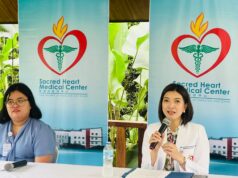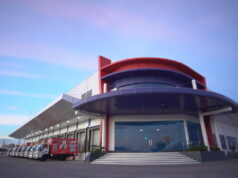CITY OF SAN FERNANDO – A committee will now look, on July 12, into the concerns aired by complainants of the planned engineered sanitary landfill and waste-to-energy plant in Barangay Pabanlag, Floridablanca.
On Tuesday, the Environmental Management Bureau (EMB) of the Department of Environment and Natural Resources (DENR) formed a committee after conducting a technical conference and consultation headed by Engr. Dennis Celestial.
Present in the technical conference were municipal officials of Floridablanca led by Vice Mayor Michael L. Galang, members of the municipal council including Dennis Isip who chairs the council’s environment committee, barangay officials as well as municipal department heads.
Also present were members of the Volunteers Against Crime and Corruption (VACC) Region 3 and the No To Landfill coalition including the siblings of Cenen Tungol who was shot and killed more than a month ago, and Aeta spokesman Romy Serrano.
The committee is composed of team leader and case handler Rosalie Miclat of the EMB’s sanitation management section, and members: Mines and Geosciences Bureau representative for the site’s geological aspect, a representative from the provincial environment and natural resources office, Floridablanca ENRO Roy Bacani, Councilor Isip, VACC’s Susan Chico, project proponents Peter Wong, Lourdes Icban and Michael Tapang,; and No To Landfill coalition Rodolfo Tolentino and the Tungol siblings, as well as Serrano and a representative from the National Commission of Indigenous People, and Mark Diwa, IP municipal council member. Celestial said the starting point for any measurement should start from the proposed sanitary landfill cell site. A set of guidelines will be followed during the ocular inspection of the site as provided by the National Solid Waste Commission through Resolution No. 54, Series of 2013 and the 13 site identification criteria and suitability assessment for sanitary landfill.
The composite team will meet on July 12 at the project site in Barangay Pabanlag to conduct accurate measurements and verify information aired during the technical conference, Celestial said.
The 13 guidelines include the site’s 500-meter proximity to ground water resources which means that the sanitary landfill shall not be located on shallow unconfirmed aquifers; and a 300-meter proximity on perennial surface waters like streams, lakes or rivers.
However, it was pointed out that only a 50-meter distance is required under RA 9003.
The rock formation will be check by the MGB representative, the proximity to a fault line should be 75 meters away, the topography or terrain of the proposed site shall not be located on a landslide prone area and should not be vulnerability to flooding.
A 250-meter proximity to existing or proposed residential areas or other sensitive land uses should also be followed as well as a 500-meter proximity to ecologically sensitive or environmentally critical areas like national roads.
Its proximity to airports must be at least two kilometers to avoid birds that might harm aircraft.
The distance and accessibility to the site where the truck haulers will pass should also be checked.
The proposed sanitary landfill cell site should be consistent with the current land use of the municipality like zoning and classification and its lifespan should exceed five years.
Celestial said the ocular inspection will determine their decision if the proponents are following the provisions of the law and whether to grant an environmental clearance certificate (ECC) to the proposed engineered sanitary landfill and waste-to-energy plant or deny it.




